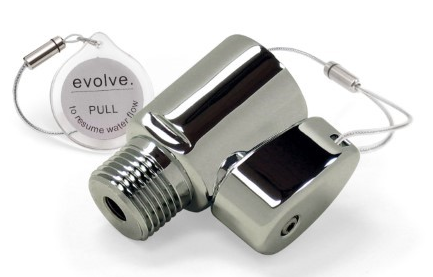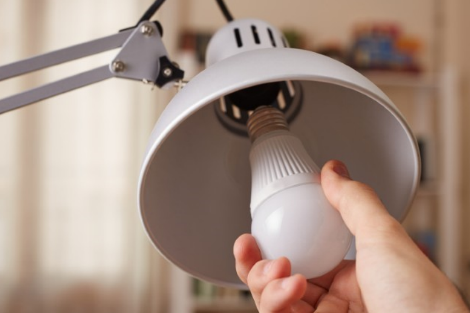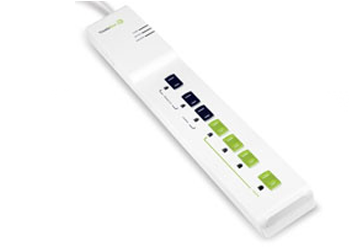Inverno com orçamento
fevereiro 22, 2016
Por vezes, a melhor forma de reduzir o consumo de energia consiste em utilizar alguma da criatividade norte-americana. Embora as temperaturas frias do inverno possam afetar a sua conta de aquecimento, algumas medidas simples de custo baixo ou custo zero podem ajudar a compensar o aumento das exigências de energia da sua casa.
Concentre-se em manter a sua casa quente e confortável
As casas antigas da Nova Inglaterra são encantadoras, mas as correntes de ar que se escapam por janelas e portas antiquadas podem deixar os moradores com frio. Concentre-se em encontrar as fugas de ar que existem na sua casa e elabore um plano para as combater. Pode ser algo tão simples como utilizar proteções contra correntes de ar ou kits de película aderente que custam menos de $20, ou pode incluir uma análise mais minuciosa por meio de uma Avaliação Energética Residencial através da Mass Save e medidas de correção recomendadas. Também pode determinar o desempenho atual da sua casa a partir da mesa da cozinha realizando uma avaliação energética online.
Porque não recrutar a Mãe Natureza para ajudar a aquecer a sua casa? A luz do sol natural pode ajudar a aquecer divisões que têm janelas viradas para Sul; certifique-se apenas de que deixa as cortinas abertas e que essas janelas estão limpas para os raios de sol poderem entrar. Feche as cortinas e as persianas à noite para proteção contra correntes de ar frias. Além disso, se uma janela não receber luz solar durante o dia, mantenha as cortinas fechadas.
Os termóstatos programáveis são outra opção excelente para controlar temperaturas ao longo do dia, permitindo-lhe definir temperaturas mais baixas enquanto estiver no local de trabalho e aumentar as temperaturas para o nível pretendido quando estiver quase a ir para casa. Se pretender comprar um termóstato novo, lembre-se de consultar a Mass Save antes da compra para se certificar de que é elegível para um desconto de $25 (para um termóstato programável) ou até $100 (para um termóstato Wi-Fi).
Obtenha mais controlo sobre o aquecimento de água
Seja qual for o método utilizado para aquecer a água, o aquecimento de água continua a ser uma das atividades que mais energia consome na sua casa. Reduza o desperdício de energia causado por aquecimento desnecessário de água verificando as definições do seu termoacumulador para assegurar que não estão acima de 120°F, que é a definição recomendada pelo Departamento de Energia dos EUA. As definições acima de 120°F não só utilizam mais energia para aquecimento da água, como também não são seguras, dando origem ao risco de queimaduras. Consulte o manual do fabricante para obter informações sobre o modo de alterar a definição do seu termoacumulador.
 Quando acorda de manhã, gosta de ligar o chuveiro e preparar-se para o dia enquanto espera pela água quente? As cabeças de chuveiro com válvula de corte termostática ajudam a assegurar que o dinheiro que lhe custa tanto a ganhar (e a água quente) não vão pelo ralo abaixo. Essas cabeças de chuveiro cortam o fluxo de água quando esta atinge uma temperatura específica, até estar pronto para o duche. A Mass Save oferece preços com desconto para cabeças de chuveiro.
Quando acorda de manhã, gosta de ligar o chuveiro e preparar-se para o dia enquanto espera pela água quente? As cabeças de chuveiro com válvula de corte termostática ajudam a assegurar que o dinheiro que lhe custa tanto a ganhar (e a água quente) não vão pelo ralo abaixo. Essas cabeças de chuveiro cortam o fluxo de água quando esta atinge uma temperatura específica, até estar pronto para o duche. A Mass Save oferece preços com desconto para cabeças de chuveiro.
Utilize eletrodomésticos de forma mais eficiente
Até os eletrodomésticos energeticamente eficientes precisam de alguma ajuda para garantir o nível máximo de funcionamento. Quando lavar roupa, lave em água fria. Consome menos energia e desgasta menos a roupa. Certifique-se também de que utiliza as opções de poupança de energia quando utilizar a máquina de lavar louça ou roupa. As poupanças de energia valem os 5 a 10 minutos adicionais de funcionamento.
Não pode sair por causa da neve? Dedique 15 minutos à limpeza das bobinas do seu frigorífico. Isso ajuda-o a funcionar com mais eficiência. Considere gastar mais 15 minutos para assegurar que o frigorífico e o congelador estão abastecidos da melhor forma possível.
Se tiver um congelador com descongelação manual, um bom projeto de inverno consiste em realizar a descongelação anual recomendada. Guarde a comida numa caixa térmica e coloque-a no exterior para a Mãe Natureza manter a comida fria enquanto melhora as condições de funcionamento do congelador.
Verifique as luzes para obter poupanças fáceis e rápidas.
 Nunca houve melhor altura para mudar para iluminação LED. As lâmpadas LED são menos caras do que nunca e estão disponíveis em vários tons quentes para noites de inverno aconchegantes. Lembre-se de procurar a certificação ENERGY STAR® para obter a melhor qualidade e explore a loja online da Mass Save para obter excelentes promoções em praticamente qualquer lâmpada necessária.
Nunca houve melhor altura para mudar para iluminação LED. As lâmpadas LED são menos caras do que nunca e estão disponíveis em vários tons quentes para noites de inverno aconchegantes. Lembre-se de procurar a certificação ENERGY STAR® para obter a melhor qualidade e explore a loja online da Mass Save para obter excelentes promoções em praticamente qualquer lâmpada necessária.
Controlos simples de iluminação, como temporizadores pneumáticos ou de contagem decrescente, podem reduzir ainda mais o consumo de energia e custam menos de $10 online.
Reavalie o modo como gere a utilização de aparelhos eletrónicos.
 A ativação da definição de gestão de energia nos seus aparelhos eletrónicos, sobretudo nos computadores, não custa nada e permite-lhe poupar $50 anualmente. Existem modos semelhantes de poupança de energia em televisores de ecrã plano, tablets e outros dispositivos, mas esses modos não estão ativados à saída da fábrica. Uma consulta rápida dos manuais dos seus produtos para ativar as definições de poupança de energia pode mesmo compensar.
A ativação da definição de gestão de energia nos seus aparelhos eletrónicos, sobretudo nos computadores, não custa nada e permite-lhe poupar $50 anualmente. Existem modos semelhantes de poupança de energia em televisores de ecrã plano, tablets e outros dispositivos, mas esses modos não estão ativados à saída da fábrica. Uma consulta rápida dos manuais dos seus produtos para ativar as definições de poupança de energia pode mesmo compensar.
Não se esqueça de que muitos aparelhos eletrónicos continuam a consumir energia quando não estão a ser utilizados. Extensões elétricas inteligentes, como as que pode comprar junto da Mass Save por menos de $10, reduzem a energia consumida por aparelhos eletrónicos quando estão desligados.
Esperamos que estas ideias de custo baixo ou custo zero o ajudem a reduzir o seu consumo de energia neste inverno, enquanto desfruta do tempo que passa dentro de casa.
Explorar mais tópicos
Soluções personalizadas de poupança de energia
MyEnergy disponibiliza conteúdo personalizado com base na sua localização e nas suas necessidades de energia.
Também poderá gostar de
Promoção da descarbonização: Como os Patrocinadores da Mass Save® conduziram Massachusetts a um ano recorde na adoção de bombas de calor.
Temos orgulho em partilhar que um número recorde de clientes residenciais optou por fazer a mudança para bombas de calor em 2023, em parte graças aos incentivos que oferecemos aos nossos clientes através dos programas da Mass Save.
As poupanças de energia ganham grandes recompensas: A ENERGY STAR nomeou os Patrocinadores da Mass Save como Parceiro do Ano de 2023
Os Patrocinadores da Mass Save orgulham-se de receber, pelo terceiro ano consecutivo, o prémio de Parceiro do Ano da ENERGY STAR - o Prémio de Excelência Contínua atribuído pela Agência de Proteção Ambiental dos EUA (U.S. Environmental Protection Agency, EPA) e pelo Departamento de Energia dos EUA (U.S. Department of Energy).
